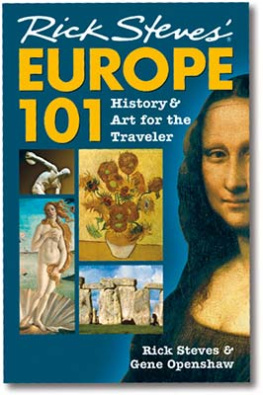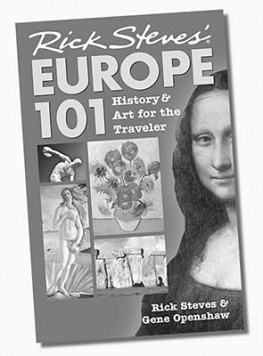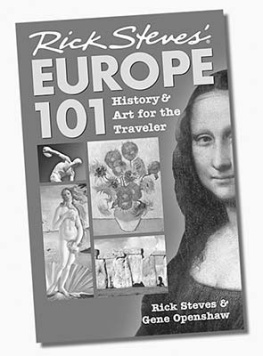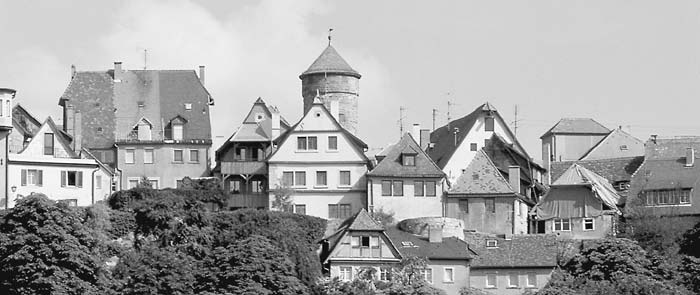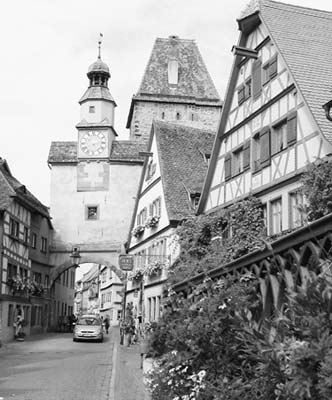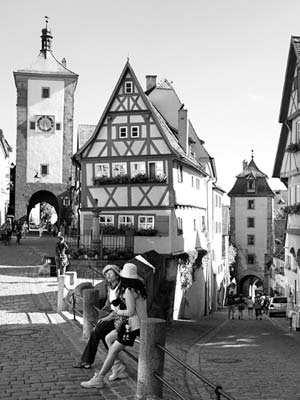Rick Steves'
SNAPSHOT
Rothenburg & the Romantic Road
Rick Steves
This Snapshot guide, excerpted from my guidebook Rick Steves Germany, introduces you to the famous Romantic Roadfocusing on the medieval walled town of Rothenburg ob der Tauber. In Rothenburg, you can take a trip back in time to immerse yourself in the Middle Ages. Wander its mysterious and well-preserved ramparts, marvel at its churches grand Gothic altarpieces, shudder at its creatively sadistic Medieval Crime and Punishment Museum, and do some of the best souvenir shopping in Germany. (Christmas ornaments are a local specialty, and sold year-round.) You can even explore the town after dark in the company of the wisecracking Night Watchman. To delve deeper into this appealing patch of Germany, take a spin on the rest of the Romantic Road to visit a wide variety of quaint, offbeat sightsfrom the adorable village of Dinkelsbhl to the quirky thimble museum at Creglingen, and from the former Teutonic Knight castle at Bad Mergentheim to the giant meteorite crater at Nrdlingen.
To help you have the best trip possible, Ive included the following topics in this book:
Planning Your Time, with advice on how to make the most of your limited time
Orientation, including tourist information (abbreviated as TI), tips on public transportation, local tour options, and helpful hints
Sights with ratings:
Dont miss
Try hard to see
Worthwhile if you can make it
No ratingWorth knowing about
Sleeping and Eating, with good-value recommendations in every price range
Connections, with tips on trains, buses, and driving
Practicalities, near the end of this book, has information on money, phoning, hotel reservations, transportation, and more, plus German survival phrases.
To travel smartly, read this little book in its entirety before you go. Its my hope that this guide will make your trip more meaningful and rewarding. Traveling like a temporary local, youll get the absolute most out of every mile, minute, and dollar.
Gute Reise!
Rick Steves
The Romantic Road takes you through Bavarias medieval heartland, a route strewn with picturesque villages, farmhouses, onion-domed churches, Baroque palaces, and walled cities. The route, which runs from Wrzburg to Fssen, is the most scenic way to connect Frankfurt with Munich. No trains run along the full length of the Romantic Road, but Rothenburg (ROH-tehn-burg), the most interesting town along the route, is easy to reach by rail. Drivers can either zero in on Rothenburg or take some extra time to meander from town to town en route. For non-drivers, a tour bus travels the Romantic Road once daily in each direction.
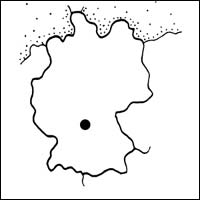
Countless travelers have searched for the elusive untouristy Rothenburg. There are many contenders (such as Michelstadt, Miltenberg, Bamberg, Bad Windsheim, and Dinkelsbhl), but none holds a candle to the king of medieval German cuteness. Even with crowds, overpriced souvenirs, Japanese-speaking night watchmen, and, yes, even Schneeballen, Rothenburg is best. Save time and mileage and be satisfied with the winner.
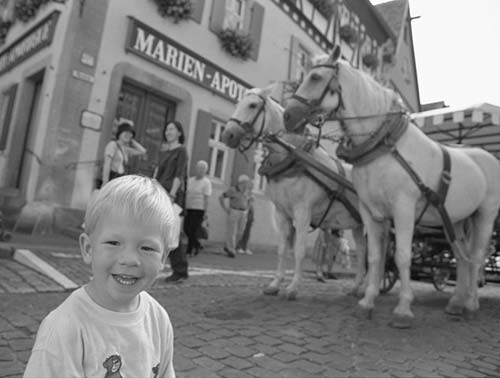
In the Middle Ages, when Berlin and Munich were just wide spots on the road, Rothenburg ob der Tauber was a free imperial city beholden only to the Holy Roman Emperor. During Rothenburgs heyday, from 1150 to 1400, it was a strategic stop on the trade routes between northern and southern Europe. Because of its privileged position, along with the abundant resources of its surrounding countryside (textile-producing sheep and fertile farmlands), Rothenburg thrived. With a whopping population of 6,000, it was one of Germanys largest towns. But as with many of Europes best time-warp towns, Rothenburgs fortunes tumbled. With no money to fix up its antiquated, severely leaning buildings, the town was left to languish in this state. Today, its the countrys best-preserved medieval walled town, enjoying tremendous tourist popularity without losing its charm.
Rothenburgs great trade these days is tourism: Two-thirds of the townspeople are employed to serve you. While 2.5 million people visit each year, a mere 500,000 spend the night. Rothenburg is yours after dark, when the groups vacate and the towns floodlit cobbles wring some romance out of any travel partner.
Too often, Rothenburg brings out the shopper in visitors before theyve had a chance to see the historic town. True, this is a fine place to do your German shopping. But appreciate Rothenburgs great history and sights, too.
Planning Your Time
If time is short, you can make just a two- to three-hour midday stop in Rothenburg, but the town is really best appreciated after the day-trippers have gone home. Spend at least one night in Rothenburg (hotels are cheap and good). With two nights and a day, youll be able to see more than the essentials and actually relax a little.
Rothenburg in one day is easy, with three essential experiences: Tilman Riemenschneiders wood carving in St. Jakobs Church, a walk along the city wall, and the entertaining Night Watchmans Tour. With more time, you could visit several mediocre but entertaining museums (the Medieval Crime and Punishment Museum is the most interesting), take some scenic hikes and bike rides in the nearby countryside, and enjoy the towns plentiful cafs and shops.
Rothenburg is very busy through the summer and in the Christmas Market month of December. Spring and fall are a joy, but its pretty bleak in November and from January through Marchwhen most locals are hibernating or on vacation. Legally, shops are only allowed to remain open 40 Sundays a year; this means that many close on Sundays during the slow off-season months.
There are several Rothenburgs in Germany, so make sure you are going to Rothenburg ob der Tauber (not ob der any other river); people really do sometimes drive or ride the train to other, nondescript Rothenburgs by accident.
To orient yourself in Rothenburg, think of the town map as a human head. Its nosethe castle gardensticks out to the left, and the skinny lower part forms a wide-open mouth, with the youth hostel and a recommended hotel in the chin. The town is a delight on foot. No sights or hotels are more than a 15-minute walk from the train station or each other.
Most of the buildings youll see were in place by 1400. The city was born around its long-gone castlebuilt in 1142, destroyed in 1356which was located where the castle garden is now. You can see the shadow of the first town wall, which defines the oldest part of Rothenburg, in its contemporary street plan. Two gates from this wall still survive: the Markus Tower and the White Tower. The richest and biggest houses were in this central part. The commoners built higgledy-piggledy (read: picturesque) houses farther from the center, but still inside the present walls.


